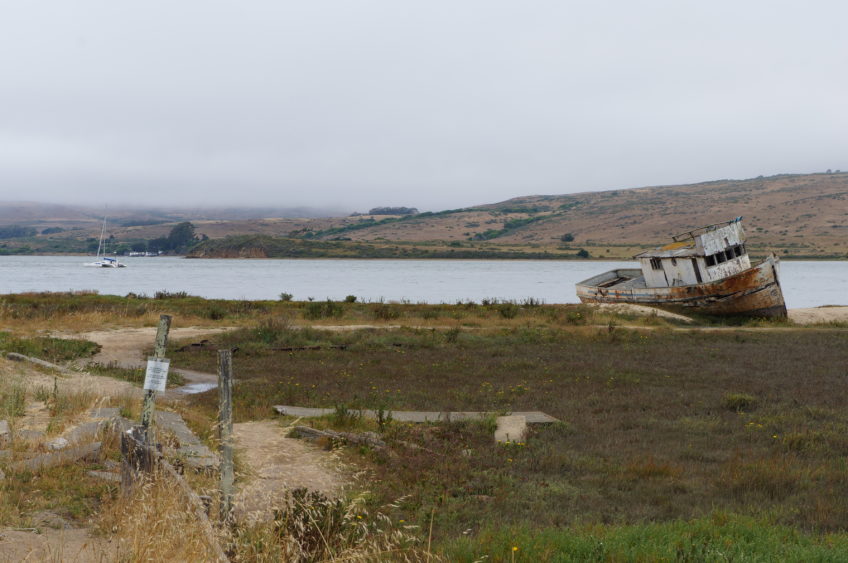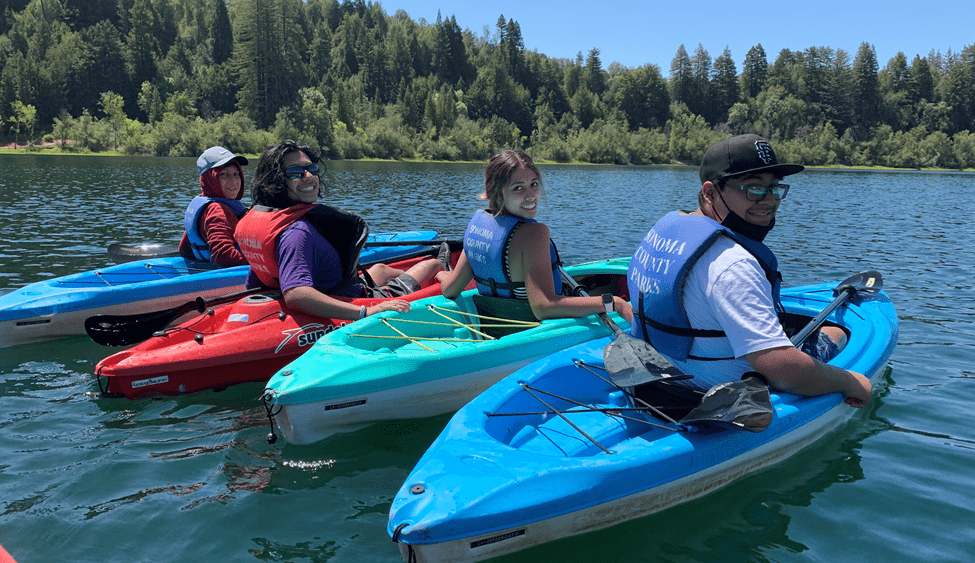
Two locations along the Tomales Bay shoreline have been identified as possible spots for projects aimed at protecting habitat from floods, adapting to climate change, and improving public access.
The Marin County Community Development Agency (CDA) is exploring the use of grant funding from the State Coastal Conservancy at Cypress Grove in Marshall and Martinelli Park in Inverness. A report is on the CDA website and an online public meeting is set for 5 p.m. Monday, January 24, to discuss details of the conceptual designs. Register for the public meeting and view the report at MarinSLR.org.
CDA’s Long-Range Planning Division contracted with Environmental Science Associates to evaluate living shoreline measures in Tomales Bay to determine the extent to which the measures could provide flood protection, public access, and shoreline development. Living shorelines such as eelgrass, oyster reefs, wetlands, and other natural systems can provide services in adapting to climate change impacts, as well as sequester carbon. The final report explains the site selection process, the mapping of wildlife habitats and the range of living shoreline options that can thrive in the bay.
Cypress Grove is on the east (mainland) side of Tomales Bay and is owned by Audubon Canyon Ranch. It functions as a nature preserve and a research facility for a conservation science program. The living shorelines evaluated for Cypress Grove include a series of tombolos, which are small offshore islands of sediment or driftwood that can capture sediment until they eventually connect, thereby providing a barrier that reduces erosion.
Martinelli Park, on the bay’s western shore, is a popular tourist spot and the location of a widely photographed shipwreck. The site includes a store and parking lot as well as informal trails and picnic tables. Living shoreline measures evaluated there include a horizontal levee and stream alterations that would provide cleaner stream flow so that sediment is delivered to areas where it can provide better erosion protection.
At the January 24 meeting, CDA staff and an engineering consultant team will address the two sites and two future projects that may develop from the work. Tomales Bay already has a wealth of natural features that protect parts of the shoreline. Unlike traditional shoreline protection methods, the existing features can protect the shoreline while enhancing habitats, public access, and aesthetics.
“If we fortify the shoreline with rock or seawalls, we will continue to lose critical shoreline habitats over time,” said Project Engineer Dane Behrens. “That means that even if public access is preserved, the natural beauty of the landscape would degrade over time, and with that the experience park users. Living shorelines projects like these create a pathway to preserving both the vulnerable infrastructure and the natural value of the shoreline. We hope that residents in West Marin communities and the visitors who come from all over the world will see the value in protecting the shorelines with living shoreline projects.”
For more information about the Tomales Bay living shorelines projects, contact CDA Planner Leslie Lacko.



